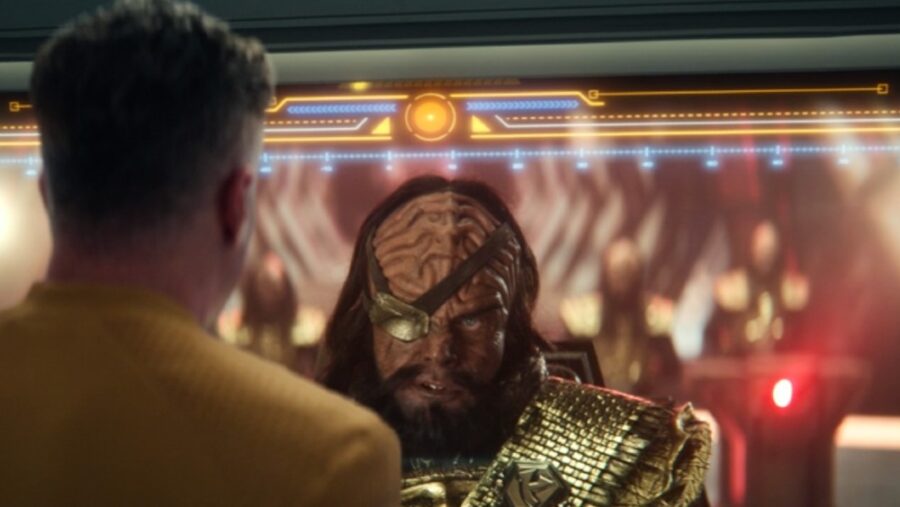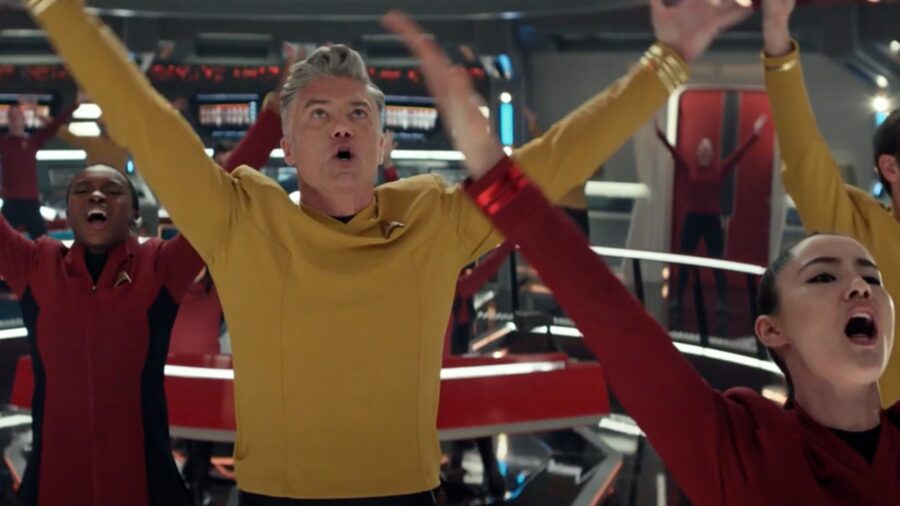Star Trek Just Turned The Klingons Into A Boy Band, Watch Them Sing And Dance

On the recent musical episode of Star Trek: Strange New Worlds, the franchise finally gave us what we didn’t know we wanted: singing and dancing Klingons. In the episode “Subspace Rhapsody,” the crew are taken through a subspace rift to an alternate reality where everyone sings and dances their feelings. The results are moving, exultant, and hilarious — the last bit is particularly true of a scene in which Klingons transform into a boy band.
Honestly, it was only a matter of time. Star Trek has long engaged in the bizarre and the wacky and has incorporated a number of genres into its narrative matrix. And it has frequently given whole episodes over to pocket dimensions, alternate universes, and “what if” scenarios, often with a great deal of humor and whimsy.
Star Trek: Strange New World‘s musical episode includes a scene in which Klingons start singing and dancing like a boy band.
After stretching a bit in recent years to incorporate darker, more graphic TV-MA material, it seems only natural it would stretch a bit in the other direction and have some fun.
If nothing else, Star Trek: Strange New Worlds has been focused on doing classic Trek in fresh, engaging ways, reviving some of the old structures and formulas while offering new surprises and twists along the way. And it has been working brilliantly.
After a first season that, while excellent, many found a bit uneven, the series has been firing on all cylinders in its second season, delivering consistently every week.
That’s honestly unusual for a Star Trek series. What might seem like a simple idea—send a diverse group of travelers out into space and see what they discover—has, across the decades, contained multitudes.
After stretching a bit in recent years to incorporate darker, more graphic TV-MA material, it seems only natural it would stretch a bit in the other direction and have some fun.
The premise is so simple that it can be difficult to find fresh ways of approaching it, get the balance of characters and stories right, and make fans happy at the same time.
As result, most longtime fans have come to expect a Star Trek series to take two or three seasons to fully come into its own as writers work out a complex network of elements. It’s a challenge that is endemic to the episodic format and isn’t exclusive to Star Trek, a franchise that has had more opportunities than most to encounter the phenomenon.
But by returning to things that have worked in the past and reimagining them, Star Trek: Strange New Worlds has pulled off the rare feat of reinventing Trek in a way that has immediately resonated with fans.

But recent years have seen greater demand—both from studios and audiences—for perfection right out of the gate, leaving many series cancelled before they find their legs or really get going.
But by returning to things that have worked in the past and reimagining them, Star Trek: Strange New Worlds has pulled off the rare feat of reinventing Trek in a way that has immediately resonated with fans. The series has not been shy about earning the “Strange” in its title, plunging all its characters into a storybook world to play vastly different people in only its eighth episode. Perhaps it is the series’ grounding in familiarity that has allowed it to more successfully take risks.
Previous Star Trek series that have taken risks, like Deep Space Nine and Discovery, have taken time for fans to warm up to them, but Strange New Worlds seems to have most in the Trek community eagerly along for the ride. Any time in Trek’s past, if someone had said, “Let’s have singing and dancing Klingons,” it would have been seemed impossible. But on Strange New Worlds, it just works.











